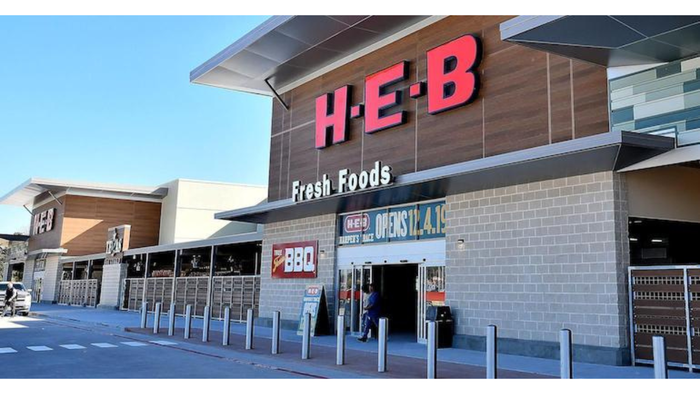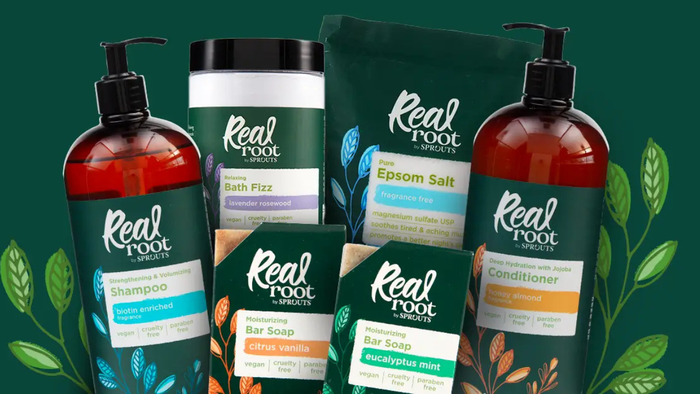Feminine care evolution
January 1, 2018
As women trend toward larger count sizes, supermarkets must rethink their product mix or fall behind. By Craig Levitt Evolve or perish. It is one of the basic laws of nature, yet some associated with the feminine care industry say that up until recently the category, in both product and marketing, hasn’t changed much over the past 50 years. Industry observers say that part of the reason products and, more specifically, advertising in the category have trended toward the bland is because of the taboo society places on talking about feminine hygiene. “We have to stop treating this as a taboo category,” says Andrew Meurer, vice president, feminine, adult and senior care North America for Dallas-based Kimberly-Clark Corp. “I always like to say women take better care of their hair, face, hands and feet then they do one of the most vital parts of their body. We believe it all stems back to this cultural taboo about menstruation.” Whether there is a taboo or not, the simple nature of the category nearly ensures that there will always be a demand for product, though sales seem to be slowing. It is estimated that the feminine hygiene category generates around $2.6 billion in sales, of which more than half are sanitary napkins and tampons. According to Chicago-based Information Resources, Inc., for the 52-week period ended Jan. 24, total sanitary napkin and tampon sales for food, drug and mass merchant outlets, excluding Wal-Mart, accounted for nearly $1.5 billion, down 0.3%. Unit sales totaled almost 340 million, but were down 3.6% from the previous year. Most observers attribute the steeper decline in unit sales to the growing popularity of larger count sizes, which has clearly helped mass merchants. “Mass and club stores continue to grow sales by offering larger sizes with a discount per pad or tampon,” says David Behrens, feminine care external relations manager for Cincinnati-based Procter & Gamble. “For supermarkets, it is critically important to display feminine care products, especially outside the aisle in high traffic areas in order to remind the consumer to purchase her products there.” Perhaps most alarming to the grocery channel is the fact that, according to industry observers, sales of feminine care products in the drugstore channel have overtaken sales in supermarkets. Some attribute this change to the growing propensity of drugstores to stock items near checkouts as well as the willingness of drugstore chain executives to advertise feminine care products in circular ads as well as cross-merchandising them throughout the store. Eric Treschuk, director of feminine care for Shelton, Conn.-based Playtex, a division of Energizer Personal Care, says consumers trending toward larger pack sizes have significantly impacted supermarket sales. “Grocery is traditionally driven by smaller count sizes,” he says. “Based on our shopper research and looking at the data from Nielsen, realistically food retailers are trailing mass and drug because of this. As grocers thin out smaller SKU sizes, the larger sizes they are stocking are not yet fully compensating, thus food trails the other classes.” Behrens adds that it is important for supermarkets to offer a broad selection of sizes, from the smaller sizes offering low dollar rings to larger sizes offering value-per-item. He also says that the grocery channel has a “tremendous” opportunity for tailored communication to individual shoppers that is not always available in other channels and that providing coupons or samples to women not shopping the category is a good way to grow a retailers shopper base. Sharing information As with any category, there is also a need to educate consumers about feminine care. While some manufacturers would like to bring feminine care to the forefront, the delicate nature of the category continues to make education difficult. While providing in-store signage is often eschewed, observers note that supermarkets with a pharmacy staff are well equipped to aid young women first entering the category as well as women going through life changes. “The economy is really moving sales around all channels,” says Dan Saylor, vice president of sales and marketing for North America for Lincoln, R.I.-based Rostam US, makers of private label products. “In addition, every brand is really promoting hard trying to protect market share. This past year has had the most promotional discounting we have ever seen. For supermarkets [to do well], they have to compete head-to-head on price with mass and dollar stores. They don’t need to beat them, just compete hard.” The economy has also increased consumers’ willingness to try store brands and as consumer interest in private label increases, so does retailer interest. Sebastien Bourassa, vice president of sales and marketing for Drummondville, Quebec, Canada-based Fempro, says retailers are also treating their store brands as “true brands” on par with national brands. “Consumers that may not have been tempted to try [store brands] in the past are now taking the time to shop these brands,” says Bourassa. “Retailers that treated their private label as a brand have an edge over other retailers as they have a head start on switching consumers to repeat buyers. Fempro has worked with different retailers to help them promote and develop trade marketing tools to increase trial and ultimately convert them to repeat buyers.” In today’s economy, while women are traditionally extremely loyal to a preferred brand, couponing has actually become a very important means of not only creating new users, but also retaining existing ones. “We definitely have adjusted our marketing strategy as a result of today’s economic challenges and are delivering a number of coupons so we can retain our loyal shoppers,” says Treschuk. Many note the success of P&G’s recently launched Tampax Pearl as an example. According to IRI figures, for the 52-week period ended Jan. 24, Tampax Pearl controlled 26.8% of market share with more than $163 million in sales, becoming the number one brand in the U.S. within five years of launching, showing that women are willing to change. Behrens says that Tampax has recently upgraded Tampax Pearl—for the first time since 2006—and the product now offers a new Leakguard design and an improved Leakguard braid. On the advertising side Tampax has partnered with tennis star Serena Williams. Playtex continues to expand its Sport tampon line, which was launched in 2006 as well. Treschuk says larger count sizes of same absorbency product have recently been introduced. “We have seen success with that launch in Kroger and continue to expand that to other retailers. We have also added lite and extra absorbency to our Gentile Glide line.” Hearkening back to his thought that women take better care of their hair, hands, face and feet, Kimberly-Clark’s Meurer believes there is an opportunity to present the feminine care category in a similar fashion to that of hair care and beauty care. With that goal in mind, Kimberly-Clark has launched a line called U by Kotex. The line includes U by Kotex Click Tampons, CleanWear pads with Wings and Liners. The line is supported with a campaign aimed at modernizing the approach to the category. “It’s time to change,” says Meurer. “Because it is personal care, there is no category that is more personal. The category ought to follow the same conventions as hair care and beauty care, but it hasn’t.” Straight talk Meurer says the line’s advertising speaks openly and honestly, shining a light on old-fashioned category conventions as well as poking fun at what he calls “ridiculous” past feminine care advertising—including Kimberly-Clark’s. “In one ad we have a young woman talking about how she could hardly believe that the advertising and the approach taken toward periods and period management is the way that it is today,” says Meurer. One issue that women often raise is the need for discretion, Meurer says. The compact format of the U by Kotex Click Tampon makes it easier for women to conceal, he says, and the products come in a box of assorted yellow, blue, red and green wrappers. “You would think that bold colors would act against discretion, but women have actually said that it works because no one would think that anything bold and bright is a menstrual product,” says Meurer. The U by Kotex packaging has also been given a modern look. Meurer likens the new “cool” and “chic” black packaging to something seen in the cosmetics aisle. Organic alternatives When it comes to organic and natural products, most shoppers are familiar with fruits and vegetables, cereal, snack bars or possibly even household cleaners. But what about tampons, maxi pads and panty liners? The lack of natural and organic feminine care products was the inspiration for Natracare, which founder, owner and developer Susie Hewson started 21 years ago out of concern for the environment. Theresa White, spokesperson for the U.K.-based company with U.S. offices in Aurora, Col., says Natracare’s product line has expanded from maxi pads, tampons and liners to include maternity pads, nursing pads, incontinence products and baby wipes. “Natural health and food stores have been carrying our products for years and have been incredibly successful” says White. “Our segment of the category has grown from the environmentalist to everyday people and the grocery stores are now saying that they need to get more of our products.” As the category gains consumer favor, the placement of organic and natural feminine products comes into question. While dedicated organic shoppers will more often than not make a beeline for organic sections, those on the fringe may not, and, therefore, may not be aware of these offerings. White says they’d like to be in the main aisles as well, side-by-side with conventional products. “Some chains swear by having them in the main aisle, some don’t,” she says. “As organic and natural products continue to grow retailers will need to incorporate our products more and they will need more space.”
About the Author
You May Also Like



.png?width=700&auto=webp&quality=80&disable=upscale)
